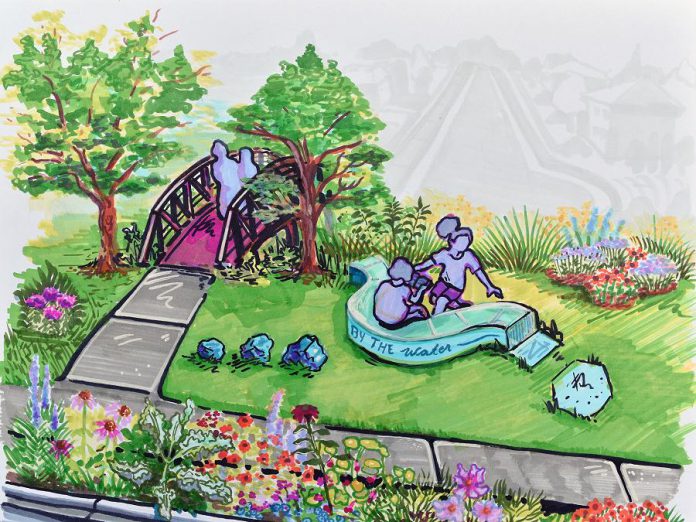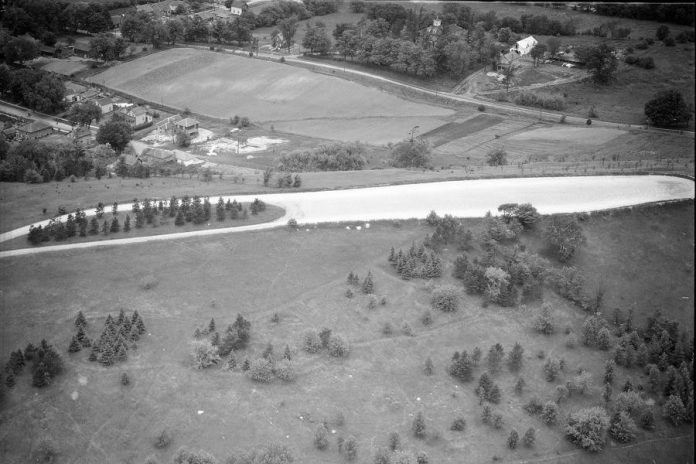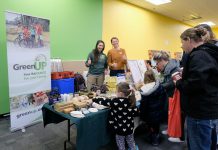
Through GreenUP’s Sustainable Urban Neighbourhoods program (SUN), I work with residents, municipal staff, and other partners to re-imagine how future neighbourhoods can be more sustainable and resilient to the impacts of climate change.
Given SUN’s focus on the future, you might be surprised how often I think about the past.
As a historian, I know history can teach us important lessons about urban planning in an era of climate change.
“Environmental history asks us to consider how the natural systems around us came to be the way they are today,” explains Jennifer Bonnell, assistant professor of history at York University and author of Reclaiming the Don: An Environmental History of Toronto’s Don River Valley. “(Environmental history) encourages us to ‘read’ familiar landscapes as the outcome of a series of decisions and developments made in particular times.”
How we shape environments, from forests to cities to wetlands, reflects the dominant values and priorities of the time. According to Bonnell, “there was very little thought among mid-century planners for the integrity and sustainability of urban nature in itself. Instead, nature was something to overcome, to minimize, and in some cases, to facilitate the major infrastructure developments of the period.”
In Toronto, this meant treating the Don River Valley as a transportation corridor and resource for urban and economic growth. Similar values have shaped the landscape in Peterborough.
Consider Kawartha Heights, one of GreenUP’s SUN neighbourhoods. In the 1950s, this west end neighbourhood consisted of farms and small businesses on the edge of town — already a radical departure from the forests and wetlands protected and shaped by the Michi Saagiig Anishnaabeg for thousands of years.
Beginning in the 1960s, planners and developers carved winding streets and cul-de-sacs out of farm fields, building hundreds of single-family homes by the late 1980s. Like many subdivisions at the time, wide roads and limited sidewalks reflected urban society’s prioritization of personal cars for daily transportation. In just a few decades, the landscape had been radically transformed again.
Despite our power to alter environments dramatically, we don’t control nature nearly as well as we think we do. Environmental historians often tell stories about the ability of the natural world to shape and constrain human activity.
In cities, flooding is a prime example. East City-Curtis Creek residents know this story well. Flooding in this neighbourhood is largely a consequence of how it was developed.
After the Second World War, developers filled in the area between Armour Road and the Trent-Severn Waterway with modest houses that catered to working families. Many of these homes were built close to or even on top of Curtis Creek. Engineers corralled the creek using culverts and hard edges.
Engineers also built storm sewers to divert rainwater away from homes, schools, and businesses. Rainwater was no longer absorbed into the ground. Instead, it was directed to local waterways.
Today, many households in the neighbourhood are vulnerable to overland and riverine flooding. The stormwater network was not built to handle the volume of rain that enters the system. As climate change brings more intense rainfall events, and urban development continues to expand, the pressure on this system increases.

GreenUP’s Neighbourhood Action Plans remind residents and partners that cities are dynamic, ecological systems that can look and operate differently than they do now, especially if we work together.
As Bonnell explains, “past decisions that transformed the landscapes around us were not inevitable, nor are they always irreversible. We can build hope for different decisions, informed by different knowledge and a different relationship with urban nature in the future.”
The collaborative visions outlined in the Neighbourhood Action Plans cultivate a hopeful and more sustainable relationship with urban nature. Each plan outlines how a re-imagined neighbourhood might look, feel, and function by 2030:
The year is 2030. The impact of the changes are evident everywhere you look: native plants and wildlife abound near Curtis Creek, the urban forest is thriving, flood damage is rare, and residents have built a strong community around food gardens and local outdoor events. This small but mighty community is living together in nature.
The Neighbourhood Action Plans offer concrete actions to achieve these goals, while acknowledging there’s no silver bullet when it comes to climate change adaptation. We will need to continuously adapt to the unpredictable impacts of climate change.
Visit www.greenup.on.ca/sun/ to access the Kawartha Heights and East City-Curtis Creek Neighbourhood Action Plans and other resources to support climate change action at home and in your community.


























